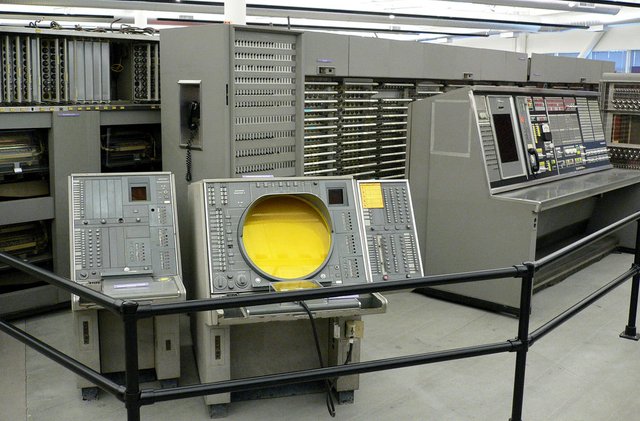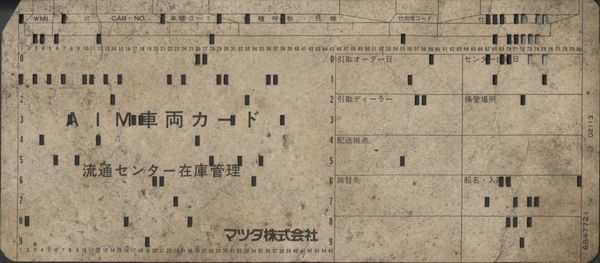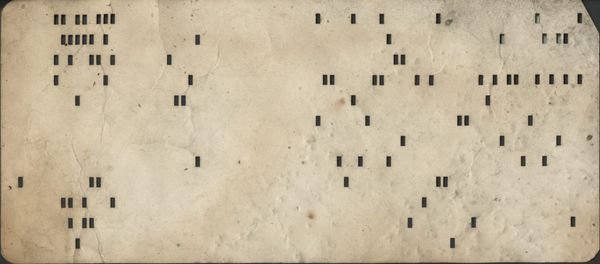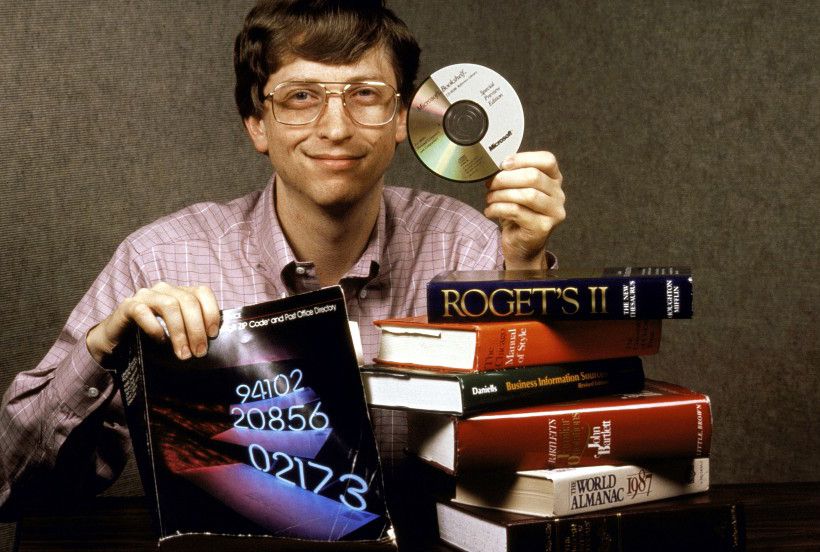When I started out in computer mainframes, I did many, many punch cards and reel to reel tapes. Also a decollator. Yes, we sure have come a long way. Probably 20 years from now, all our current technology will be considered ancient.
This stack is the computer network management program Semi-Automatic Ground Environment. The network collected information from military radar and was displayed here on this screen:
Punched cards generally use one column of holes for each digit or letter. But there was no worldwide standard for the number of columns, the size of the card, or the shape of the hole. In 1928, IBM switched to rectangular holes on 80-column cards. Powers-Samas in the UK continued to uses round holes, and over the years had cards with 21, 26, 40, 65, and 80 columns. In the 1970s, IBM introduced a 96-column card with very tiny round holes.
Are those punch cards? Oh my goodness. We've come a long ways baby.
Yes. They write that it's 62500 punch cards.
When I started out in computer mainframes, I did many, many punch cards and reel to reel tapes. Also a decollator. Yes, we sure have come a long way. Probably 20 years from now, all our current technology will be considered ancient.
This stack is the computer network management program Semi-Automatic Ground Environment. The network collected information from military radar and was displayed here on this screen:

https://en.wikipedia.org/wiki/Semi-Automatic_Ground_Environment
This is a Japanese card punch. And they're cool.


Punched cards generally use one column of holes for each digit or letter. But there was no worldwide standard for the number of columns, the size of the card, or the shape of the hole. In 1928, IBM switched to rectangular holes on 80-column cards. Powers-Samas in the UK continued to uses round holes, and over the years had cards with 21, 26, 40, 65, and 80 columns. In the 1970s, IBM introduced a 96-column card with very tiny round holes.
And this is Bill Gates showing the amount of memory on the CD. 1987 year.
